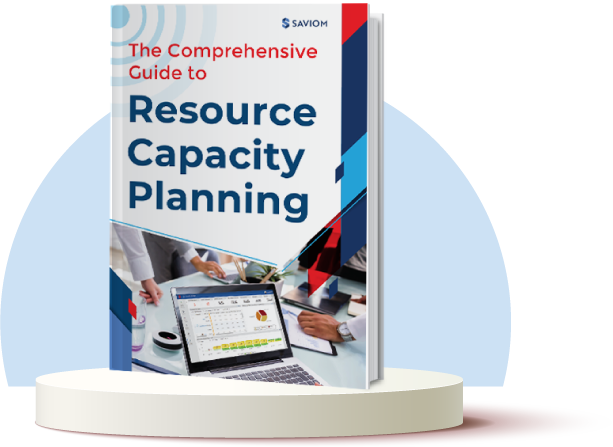“Technological innovations will be the heart and blood of the banking industry for many years to come, and if big banks do not make the most of it, the new players from FinTech and large technology companies will overtake them.”
– David Brear, former head, UK Digital Banking practice for Gartner Consulting
Mr. Brear’s statement shows how banking has changed drastically over the years, from simple money lending and deposits to wealth management, cryptocurrency, insurance, and so on. Additionally, the use of digital and mobile platforms to render banking services has further revolutionized this sector.
As a result, well-established banks have increased their footprints across multiple geographies giving rise to the onsite, offshore, and nearshore business models.
Since the banking industry requires multiple specialized-skilled resources, it faces numerous challenges in its onsite locations and offshore delivery centers. Some of them are conflicting priorities, high resourcing costs, unplanned attrition, skill gaps, etc.
This article discusses the business model of a multinational bank and highlights the resourcing challenges it faces to maintain profitability and sustainability. It is imperative that enterprise-grade resource management software is the need of the hour to address these challenges.
First, let’s look at the basics,
Banking and finance sector: an overview
“Bank” is a broad term that encompasses several different financial institutions. Therefore, understanding the various types of banks is necessary to learn their different services or products. For example, some banks are consumer-facing and directly serve the general public, while others play a more strategic role in the flow of money through the economy.
Types of banks
- Retail/consumer bank: These banks provide services to the general public rather than businesses. It helps individual consumers manage their money, access credit, and securely deposit their cash.
- Commercial banks: They usually provide services to businesses and companies by accepting deposits, offering checking account services, providing various loans, and offering primary financial products like certificates of deposit (CDs), etc.
- Community development bank: It was created to promote economic development in underdeveloped regions. These banks provide financing for projects that improve communities and the lives of low- and moderate-income families and senior citizens.
- Investment bank: It acts as an intermediary in transactions such as IPSs, mergers, acquisitions, etc., for corporations and governments.
- Online or neo bank: It is a fintech firm with no physical branches that provide digital and mobile-first services like payments, debit cards, money transfers, lending, etc.
They are some of the major types of banks and financial organizations. But how do these banks function?
Let’s take a look.
How do banks run their business?
Banks manage the flow of money between people and businesses through various instruments such as offering deposit accounts, loans, credit cards, check-cashing services, wealth management services, insurance, etc.
Among these, accepting deposits and granting loans are the primary functions of a retail bank. Bank accepts different types of deposits from the public, such as saving, fixed, current, and recurring deposits. They then utilize the deposits received from the public to advance loans to businesses and individuals. The various types of loans include personal loans, student loans, mortgage loans, home equity loans, credit-builder loans, etc.
To render these services, banks primarily use six different channels such as branch banking, mobile banking, ATM Channel of Banking, telebanking, self-service banking, and internet banking. It enables them to effectively communicate with their clients and provide customized services based on their preferences.
As a result, many successful banks are thriving to provide an omnichannel experience to their customers.
The philosophy behind this concept is: “Every customer will receive a similar kind of service no matter the channel they choose to contact the bank.”
Various roles within the banking sector
Since the banking sector directly deals with clients and handles sensitive information and financial data, they need a specialized workforce to carry out these functions effectively. Some of the crucial roles include:
- Teller: Person who provides face-to-face service to the customers in the banking centers.
- Trader: A person that buys and sells securities and other financial instruments in capital markets on behalf of clients.
- Fund Manager: They make investment decisions on behalf of their clients by buying and selling shares, bonds, and other assets to increase the value of their client’s portfolios.
- Investment Analyst: They research and analyze assets such as stocks, bonds, and commodities and help traders, fund managers, and stockbrokers make investment decisions.
- Risk Manager: They evaluate an institution’s risk exposure and implement measures to mitigate severely adverse scenarios.
- Compliance Officer: They ensure that businesses and their staff remain compliant with a substantial number of rules and regulations and resolve any contractual issues.
- Security & Fraud Specialist: They look at fraud management, business continuity, cyber risk, insider risk, and physical and people security. They offer intelligence gathering, investigation, and incident management services and are often closely linked to operations and technology services.
The emerging fin-tech sector
Fin-tech or “financial technology” refers to the new innovative advancements that enhance or automate processes and services in the financial industry. It includes mobile banking, insurance, cryptocurrency, investment apps, etc.
It also enabled banks to move beyond cash and paper-based payments to E-banking and mobile banking. Technology-based payment services like PayPal, Venmo, and Square have revolutionized the exchange of money by helping to send money directly to others and reducing dependency on physical cash.
In addition, banks use fintech for back-end processes like monitoring account activity, customer care, and underwriting loans. Since banks use advanced technology like blockchain, and AI, the need for specialized employees such as data scientists, programmers, and so on has increased rapidly. In addition, technological advancements have also enabled banks to set up their firms in other countries, thereby having a global presence.
Now that the basics of the banking sector are clear, let’s look at the business model of multinational banks.
Business model of an MNC bank
Multinational banks (MNBs) are financial institutions with operations in more than one country. Let’s understand their business model.
Presence in onsite/offshore/nearshore locations
They primarily operate in their home country to provide various banking-related services to their valued customers. Some can expand their horizons in other countries and can invest in banking centers as per the business strategy. The MNBs also set up offshore delivery centers in various developing countries to provide back-end support services due to high resourcing costs. Many banks are also effectively using low-cost global resources for software development activities from these delivery centers.
For instance, the high resourcing costs in the US have led central American banks to set up development centers (popularly known as captives) in offshore locations such as India and the Philippines. In addition, to address the time-zone-related challenges, banks have also created support centers in Mexico, which is termed a nearshore location. These additional investments enable the banks to deliver services such as 24/7 customer care, project delivery, and other back-end activities at a reduced rate while ensuring quality.
Read More: 5 Best Practices to Resolve Resource-Centric Challenges in Global Project Delivery
Projects are executed using a combination of vendor and in-house staff
Banks often handle multiple projects simultaneously, which require a large number of generic and niche skilled resources. These resources include financial risk managers, investment analysts, auditors, etc., who are usually hired as full-time employees. At the same time, they also need other resources, such as data scientists, software developers, testers, etc., which are not traditional banking roles. While these roles are meant to carry out support functions, their contributions are equally essential to ensure the organization’s profitability.
It is not practical for the MNBs to hire every resource under their payroll. Project-based activities require a large workforce for a definite period. So, the banks rely heavily on the vendor organizations to supply quality resources on a requirement basis. They also have the option to hire their staff at their offshore delivery centers. But recruitment activities are carefully planned as there is no concept of the bench, and one needs to ensure continuous billability of these resources.
The roles which require domain knowledge or highly-specialized skills are kept within the bank (either at an onsite or offshore location). Generic-skilled or temporary resources are usually taken from the vendor organizations to maintain a balance. Thus, it helps them address any project’s sudden ramp-up/ramp-down activities.
Most of the mundane activities are outsourced to the low-cost locations
Apart from IT and software development, MNBs provide customer care services and carry out various administrative tasks. Due to cost arbitrage, these activities can be carried out from another low-cost location, provided there is no compromise in quality.
It is expensive to hire resources and directly provide these services from the onsite location, and global competition has forced banks to outsource some of these mundane activities. If the knowledge and associated skills can also be easily transferred and there is no requirement for face-to-face interaction, these activities can get executed from another location.
For example, If an American bank needs to provide client-support services, they would set up their call centers in countries like the Philippines, and India, where many English-speaking graduates are available at a considerably lower rate.
Budget is allocated annually (run-the-bank/change-the-bank)
In multinational banks, budgeting happens annually when they assess their financial resources, determine the expenses, and then set their goals. Depending on the budget amount, they undertake two initiatives: run the bank and change the bank.
Run-the-bank refers to a bank’s operational activities that ensure smooth functioning, day-to-day operation, etc., and change-the-bank is the first step in transformation and innovation. It improves bank functionality through developments in IT, operations, customer service, sales, and marketing.
No bank can compromise with their Run-the-bank related initiatives. These activities are usually carried out by the permanent employees of the bank with minimal contingency staff. On the contrary, the Change-the-bank projects help banks to stay ahead of the competition, evaluate and introduce modern technology, retire legacy applications to save cost, etc.
Read More: 5 Steps to Develop a Reasonable Project Budget that Gets Approved
Each executive has their priorities and separate KRAs
Onsite and offshore (business and technical) executives have separate goals and KRAs due to the nature of their roles. The captives always depend on the onsite executives for work allocation. However, the purpose of the onsite executive is to deliver every project within time and budget successfully. Therefore, they have the freedom to use on-demand resources either from their offshore-based entities or empaneled vendor organizations.
The onsite executive feels comfortable if the critical resources of an important project work with the management team from the same location. It is easier for the vendor organizations to mobilize a resource at the client site or hire resources at an onsite location. However, it remains a challenge for the offshore location as it takes time to make an existing employee visa-ready.
Offshore delivery center and vendor organizations compete with each other
It is common for offshore delivery centers and vendor organizations to compete when there is an onsite project. The offshore executives would like to have complete autonomy over a project and use vendor organizations at their convenience. However, the overall control always remains with the onshore management, who decides how to onboard resources for a given project.
Many vendor organizations make a senior non-billable account manager available onsite to manage client relationships. It provides additional lead time to the vendor organizations for capacity planning for a new project. Due to this proactiveness, the vendor organizations usually bag most of the projects.
Sometimes, senior management can also force the business executives to hire internal resources at offshore locations and utilize them instead of vendor organizations as a part of the long-term strategy.
Hybrid delivery model is used to keep a balance
Even though bank management has a preference to complete projects in onsite locations using vendor resources, too much dependency on them can have a negative impact.
Therefore, they have introduced the process of hybrid delivery where onsite, offshore, and vendor organizations work together for project completion.
Here, they leverage senior employees from onsite and offshore locations to manage the project so that the knowledge gained along with the subject-matter-expertise remains within the bank. In addition, the vendor organizations are used for short-term requirements such as coding and testing. It creates a balance in the ecosystem and delivers quality projects at low costs.
As mentioned above, MNBs use several resources from different locations for cost-effective project delivery. However, each delivery model has specific resourcing bottlenecks that make this more challenging.
Now, let’s look at the onsite banking resourcing challenges.
Resourcing challenges of the onsite location
We will discuss some of the roles and responsibilities of the executives at the home location, along with their resourcing challenges.
Deliver run-the-bank/change-the-bank projects within time and budget
One of the primary KRAs of an onsite banking executive is to complete all run-the-bank and change-the-bank projects within the stipulated time and budget. However, the lack of foresight into their future projects makes it challenging to identify the project’s resource requirements.
This makes it difficult for bank project managers to decide whether to leverage onsite, offshore, and vendor resources. Any last-minute planning can lead to firefighting for quality resources and unnecessary hiring to fill the skill gaps. It can further cause project delays and budget overruns.
Decide on a hiring strategy for onsite/offshore locations
The hiring strategy for onsite and offshore centers can be completely different. The onsite managers can directly seek approval from the local HR and initiate hiring activities per their requirements. However, due to the lack of visibility of pipeline projects, offshore executives cannot hire permanent staff before consulting their onsite counterparts.
As a result, the onsite executive first decides the number of resources required based on the hybrid delivery model. If a gap in specific skills exists in the offshore delivery center, the open positions are accordingly created. At the same time, any excess resources are released for the other projects within the captive. If some resources cannot be given new assignments, they can be asked to leave the organization.
Manage attrition for both legacy and modern skilled resources
According to the Compdata survey, employee turnover in banking and finance is 18.6 percent, the highest of any industry.
MNBs leverage both traditional and modern skills to ensure smooth functioning of financial activities. However, factors such as excessive workload, stress, burnout, high retirement rates, increased demand and competition for skilled employees contribute to high turnover.
This makes it challenging for banks to identify resources with these legacy or outdated skills in the job market. On the other hand, technological advancements have enhanced the requirement for modern skills such as AI/Machine Learning, Blockchain, IOT etc. However, due to market demand for these specialized skills, it becomes difficult for the banks to retain these employees.
Read More: Ten Effective Strategies to Reduce Employee Turnover
Create the right mix of onsite, nearshore, and offshore resources for every project
Multinational banks execute several projects simultaneously for growth and profitability. However, resource planning for each project becomes challenging as they may have specific requirements. Some projects can be delivered from any location, whereas others may need an onsite presence for most of the critical roles.
If a manager only allocates resources from onsite locations, it will exceed the budget. On the other hand, if they seek the help of vendors to meet every resource requirement, organizational employees will be underutilized. Similarly, only utilizing offshore and nearshore resources can hamper project quality and cause delays due to a lack of proper communication and collaboration. Therefore, managers must create the right mix of onsite, nearshore, and offshore resources for every project.
Mobilize cost-effective resources for the change-the-bank initiative
As discussed, depending on the budget, banks undertake two initiatives known as the run the bank and change the bank.
While run-the-bank projects support the functioning of banks, change the bank projects helps in strategic business growth.
These projects often require specialized skillsets and advanced technology.
For example, if a bank is adopting new technology for a new initiative, they need programmers and software engineers who can design and test the product. However, since there is a limited budget to complete all the projects, using high-cost onsite engineers can lead to budget overruns. So, managers need to identify and mobilize cost-effective resources from offshore and nearshore locations to complete these projects.
Retain vendor resources who have gained significant knowledge
Sometimes employees from vendor organizations who work for a limited period become an indispensable asset to the organization. For example, a niche skilled vendor resource is hired for a two-year banking project; once their contractual period is over, their services cannot be guaranteed.
After the project’s closure, the knowledge acquired during this period will no longer exist within the bank as the person concerned can take up a project with another client. The vendor organization may not allow the bank to hire the resource as a permanent employee, or even worse, the same person can resign from the vendor organization for a better opportunity.
Read More: What is a Contingent Workforce and Why an Organization Needs It
Meet compliance requirements from the statutory authorities
Banks must prepare compliance reports based on the latest rules and regulations of the central bank. However, since these rules can suddenly change and new requirements are frequently added, it requires additional resources to complete the work on time.
For instance, if certain compliance reports need data from the past ten years, they would require technology and resources to handle this work within stringent deadlines. Furthermore, this data needs to be restored from the archives before processing as it may not be available online. The lack of skilled resources and high resourcing costs make it difficult for the onsite managers to meet the compliance requirements from the statutory authorities.
Since these are the highest priority, it may be required to mobilize resources from other projects to meet the compliance requirement. As a result, it can negatively impact those projects.
Maintain obsolete hardware which is close to retirement
Despite the emergence of fintech, numerous multinational banks have pertinent issues with their hardware and technology as they still use outdated legacy tools. According to EY, 43% of US banks still use COBOL, a programming language dating from 1959. This not only affects the customer experience but also increases maintenance costs.
Banks cannot completely retire obsolete hardware due to the large amount of data stored in these systems, and transferring them into a new system can be expensive and time-consuming. However, maintenance costs of this hardware take up most of the annual budget, leaving a few amounts for the innovative change-the-bank projects.
Empanel the right vendor as per the future skills requirement
Banks often choose the vendors without considering their future skills requirements, leading to bottlenecks at a later stage. The selected vendors might not be able to provide appropriate resources to the banks, leading to project delays.
Therefore, banks need to have a clear perception of their future strategy, target market, and current capabilities while choosing the vendors. Then, based on their skill requirements, banks must identify and select vendors who can provide the requisite resources within their budget.
These were the significant resource-related challenges in the onsite location. Now let’s look at the resource-centric challenges of the offshore delivery center.
Resourcing challenges within the offshore delivery center
Here is a rundown of the crucial resource-related challenges within the offshore delivery center.
Inability to provide quality work to expensive resources causing unplanned attrition
For multinational banks, their positive brand reputation and expensive salary packages enable them to attract and hire top talent from offshore locations. However, the number of projects for offshore delivery centers is less compared to onsite locations. As a result, most of these resources remain underutilized.
When resources are underutilized with fewer opportunities to grow, they will be demotivated and disengaged as they cannot leverage their skills to the maximum potential. This leads to high employee attrition of offshore resources.
Require multiple approvals to complete hiring activities.
Unlike onsite offices, the offshore hiring process often requires multiple approvals from the local HR and onsite tech executives. As a result, many talented candidates may take up other opportunities due to this long hiring cycle and will not be available during recruitment. In addition, since the onsite technical executive is responsible for the overall budget, they can only give approval if there is a certainty of future work.
However, due to a lack of visibility into future projects, managers cannot accurately determine whether it is a short-term or long-term requirement. As a result, offshore executives find it challenging to convince their onsite counterparts for additional staff within their department.
Read More: How to Create an Effective Hiring Strategy
Conflict of interest with vendor organizations during hybrid delivery
Banks use hybrid project delivery models to execute quality projects at a lower rate. For example, banks can allocate ten offshore resources and twenty contingent resources from two vendor organizations for a project instead of just using onsite employees. They work together as a team even though they belong to different organizations.
Most often, the vendor organizations have an onsite presence and end up being in control of the project even though the offshore team belongs to the same bank. The vendor organization might not effectively communicate the updates and changes to the offshore team. In addition, when there is a new resource requirement, they try to allocate resources from their organization. All of these can lead to conflicts and disagreements between vendor organizations and offshore managers.
Frequent hiring/firing activities as there is no concept of bench
Even though offshore hiring goes through multiple rounds of approvals, managers often recruit high-cost permanent resources for short-term requirements due to a lack of qualified contingent employees. However, once the project gets over, these resources are released to prevent underutilization as they do not have visibility into future projects.
But, when a project with a similar resource requirement comes up in the future, they initiate the hiring process to ensure the availability of these skillsets. This repeated hiring/firing due to a lack of foresight into pipeline projects leads to cost-escalations and damages the bank’s image.
Read More: How Resource Management Helps in Reducing the Hiring/Firing Cycle?
Employee dissatisfaction due to uneven working hours
Numerous multinational banks from the US, Europe, Australia, etc., have set up their captives in India, the Philippines, Indonesia, etc. Time zone difference between these locations is a significant challenge for offshore managers. It causes communication gaps which makes them feel disconnected from the onsite location and eventually hampers their productivity.
Most offshore centers work during their onsite counterpart’s business hours to ensure proper communication. For example, if it is a US bank and the offshore team is from India, there will be a time zone difference of approximately 10 hours. If the Indian resources work continuously in the USA time zone, it will cause burnout and affect their work-life balance leading to attrition.
Fewer quality projects hinder career development opportunities
Compared to service organizations with multiple customers, captives have fewer projects as they only have a single client, i.e., their parent bank. In addition, the fierce competition with the vendor organization for additional work also reduces the number of projects and career development opportunities for employees.
Bank employees often work on similar projects; as a result, they cannot utilize their skills effectively and develop themselves, leading to dissatisfaction and disengagement. Moreover, since captives receive fewer projects with autonomy and decision-making power, there is less opportunity for career growth.
Read More: What is Resource Allocation? A Comprehensive Guide for Project Success
Delay in travel readiness of resources results in opportunity loss
Usually, when a new project is in the pipeline, the onsite executives would require experienced senior employees from the offshore center to come to the onsite location. It enables them to gain better knowledge about the project and later deliver it from the offshore location.
However, the visa process from applying to approval can take up to 3-4 months which can further delay the project’s onset. Since officials from offshore centers cannot reach on time, the onsite executives can seek the help of empaneled vendors who can land resources at an onsite location within a week. This results in a loss of opportunity for the captives.
Infrequent facetime with onsite executives creates apprehension about capabilities
The interaction and communication between onsite and offshore executives are often based on need and are less frequent. This can lead to communication gaps; as a result, onsite and offshore executives do not get real-time updates regarding the projects and resources.
Due to this, onsite executives do not have a proper idea of the skills and capabilities of their captives. Since they are apprehensive of the offshore centers’ capabilities, fewer projects get allocated to them. On the contrary, the vendor organization invests in making a senior nonbillable resource available onsite for relationship building. The offshore managers must frequently visit the onsite location to develop trust and better rapport with their counterparts.
Reduced learning opportunity as resources work in silos with limited interactions
Resources working in captives often face the issue of a lack of multifaceted projects; as a result, they are siloed into one division or department. Apart from this, due to limited interaction between team members as they work on individual tasks, there is no proper knowledge sharing between the resources. This limits the resources’ individual growth as they have minimal opportunities to diversify their skillset.
In addition, most banks often use outdated technology, and when employees work on run-the-bank projects, they will not be able to update themselves on the latest trends. This limits their skill development and eventually leads to obsolescence.
Read More: How Can Retraining/Upskilling Future-Proof Your Workforce?
Why is futuristic resource management software need-of-the-hour for every bank?
Multinational banks require a diverse set of traditional and unconventional resources to execute and complete projects within their ecosystem successfully.
Therefore, an advanced resource management software is essential to manage their banking and support resources for overall profitability efficiently.
The tool provides 360-degree visibility into every resource and its attributes such as skill set, competencies, cost, location, etc., and helps identify the best available candidates for each project. In addition, it provides a bird’s eye view of both permanent and contingency resources in real-time.
Additionally, the forecasting capabilities give foresight into the pipeline various project demands and help identify resource shortages or skill gaps in advance. This enables them to initiate strategic hiring activities and other resourcing treatments to bridge the capacity vs. demand gap ahead of time. It helps them to allocate cost-effective resources from different locations in a timely manner. If a particular skill is required only for a short period, they can effectively leverage the services of vendor organizations to create the right mix of onsite, nearshore, and offshore resources for every project.
Furthermore, the resource managers can track the utilization levels of banking and non-banking resources using the heatmap and forecast vs. actual reports and take corrective measures ahead of time. It will prevent over/underutilization and ensure that employees are optimally utilized. Therefore, a resource management tool enables the holistic management of banking resources by enhancing productivity and performance.
Conclusion
The banking sector is one of the world’s largest labor-intensive and expensive industries. Even though multinational banks use the hybrid delivery model to complete the projects in a cost-effective way, it is plagued with numerous resourcing bottlenecks. The above-mentioned corrective measures and advanced resource management software will help mitigate them.
The Glossary
Read More: Glossary of Resource Workforce Planning, Scheduling and Management
The SAVIOM Solution
SAVIOM is the market leader in offering the most powerful and configurable solutions for managing enterprise resources efficiently and effectively. Having more than 20 years of experience, this Australian-based MNC has a global presence in over 50 countries. It is also popular with more than 100 customers and helps them achieve their business goals. SAVIOM also has products for project portfolio management, professional service automation, and workforce planning software which can be easily customized as per business requirements.











